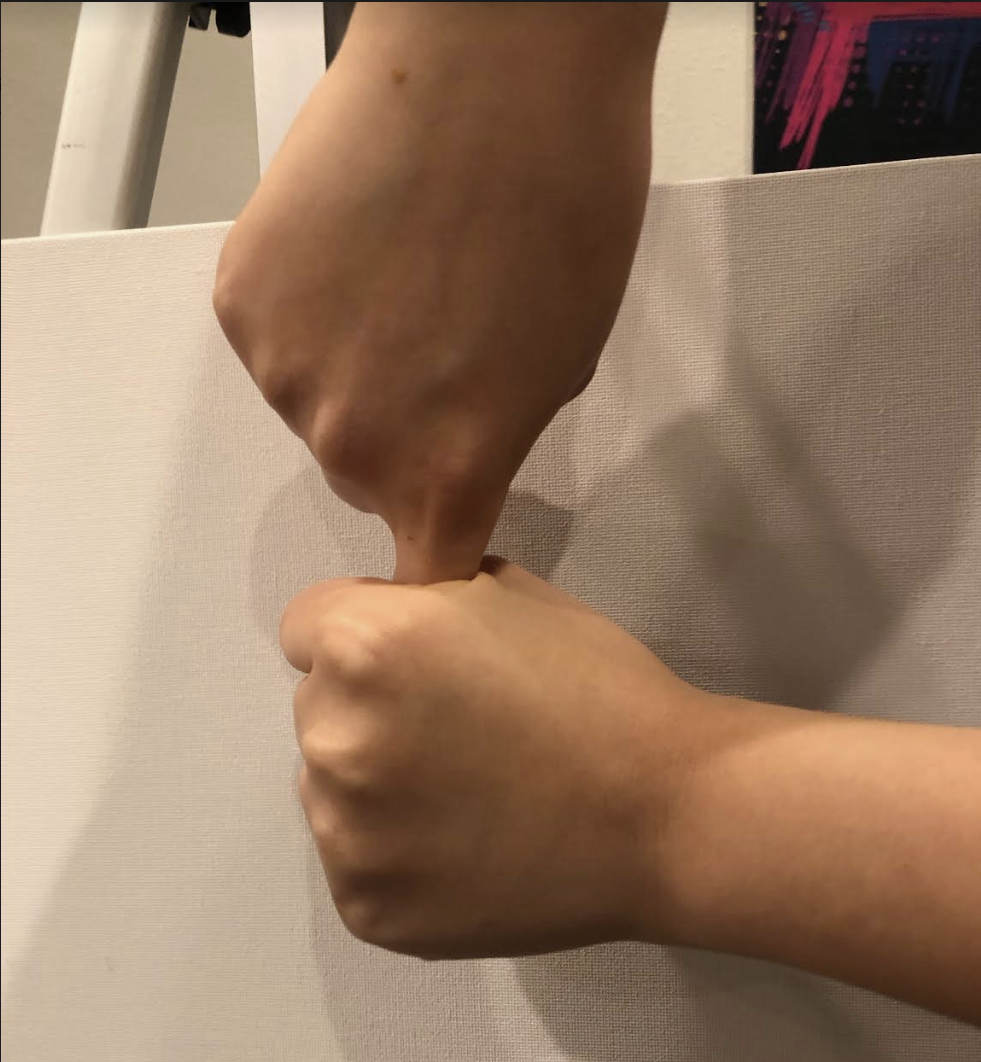
The informant is a third year in the USC Trojans Marching Band.
The gesture is, using my left hand to make kind of a fist, you’re holding it upright. And then you take the other hand, you point your pointer finger (laughs) and then you stick that finger in the hole that your fist makes. But it’s important that it’s standing up.
-Informant Describing the Gesture
[How do you use this gesture?] I’m in the band. The Trojan Marching band of USC, Fight On. [Fight on] And this (hand gesture) is what the director would make when he is trying to call this song. Often times you can’t really hear Jake (the director) over the crowd noise, so he’ll make the gesture so we can know what we’re playing even if we can’t hear him. And it’s passed down. I can turn around and make the gesture at someone behind me and they’ll get it and pass down the gesture (to people behind them). [For the studio audience here, what song does it signifying you’re playing?] It signifies that we are playing in the stone. [Do you know how it came to be?] I assume that the fist is meant to be the stone (laughs) and the finger is meant to be the sword in the stone, so that brings it together to the name-sword in the stone (laughs). [Finger in stone, got it]
-Interview with the Informant
The gesture is one of many that the USC Marching Band uses during games. Someone who is not in band would not know any of the hand gestures as they would have no use for them. The band has an incredible strong bond as a group, which is reflected in the oodles of folklore it contains. Even in the interview with this informant, there was a demonstration of the band’s unique atmosphere. The informant referred to Dr. Jacob Vogel as Jake, something that only band members second year or up are allowed to do. People outside of band probably don’t know its director by name (Dr. Jacob Vogel), and certainly wouldn’t know him by the name Jake.
Additionally, this gesture demonstrates how some folklore is spawned as a solution to a problem. In this instance, the problem that the band faces with communication. Because of how hectic the games, both football and other sports, are, they are unable to hear what the director calls next. They have to rely on each other to pass back the song called both verbally with hand signals and this reliance strengthens their bond as a folk group. The informant’s understanding of why the gesture is the way it is draws upon a well known legend of King Arthur. The informant says that the finger signifies a sword in the stone, the stone being made up of the other fist, a clear reference to the sword in the stone which is a central part of the King Arthur legend. The song’s title, In the Stone, does not reference a sword in the stone, but instead that the love described in the song was written in stone, a reference to the Biblical story in which Moses receives the ten commandments written on stone tablets. Whether or not the gesture is a reference to the sword in the stone or just a demonstration of something being in a stone, the reference to a different very widespread piece of folklore in a much more exclusive piece of folklore was worthy of note.
